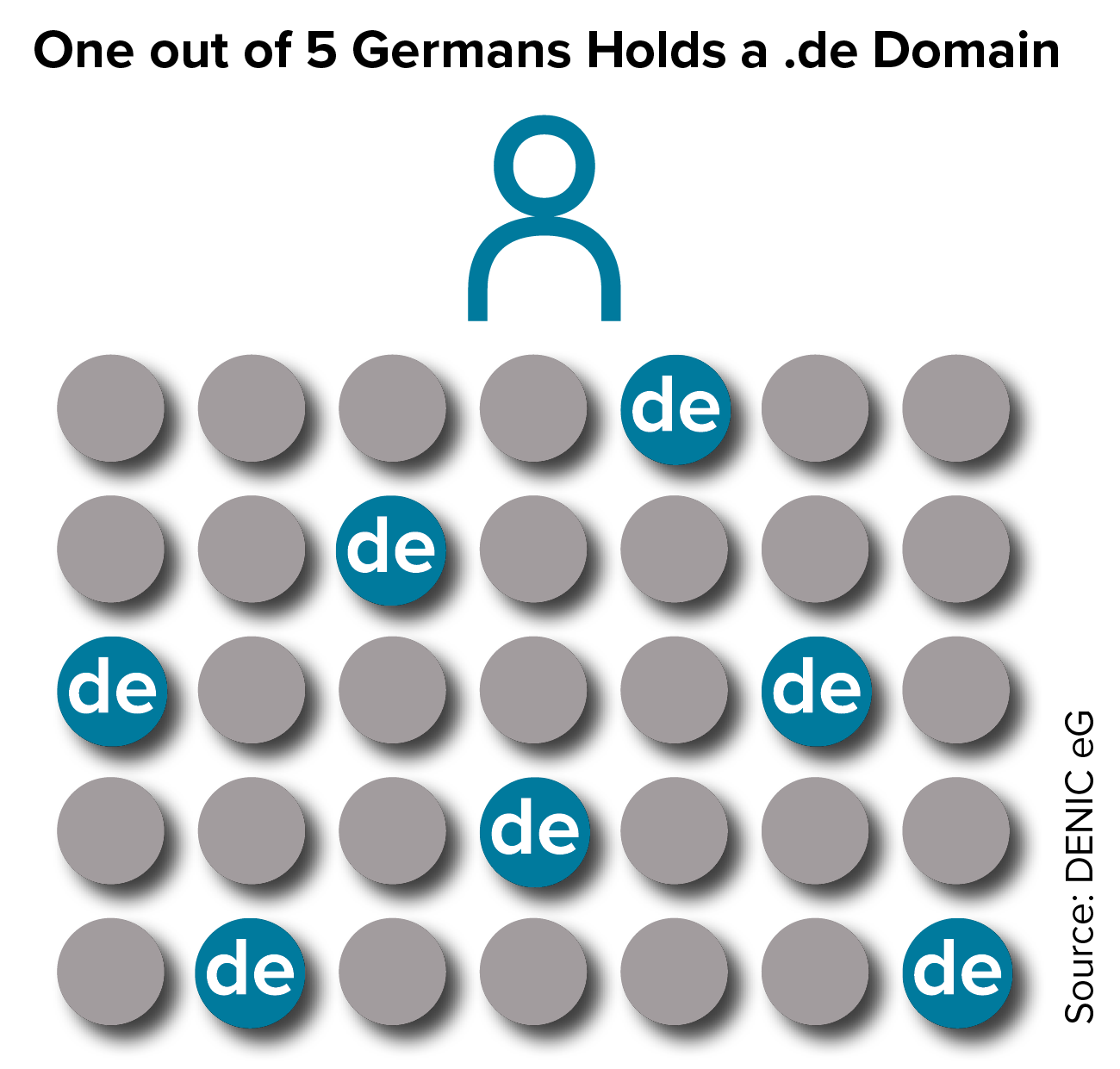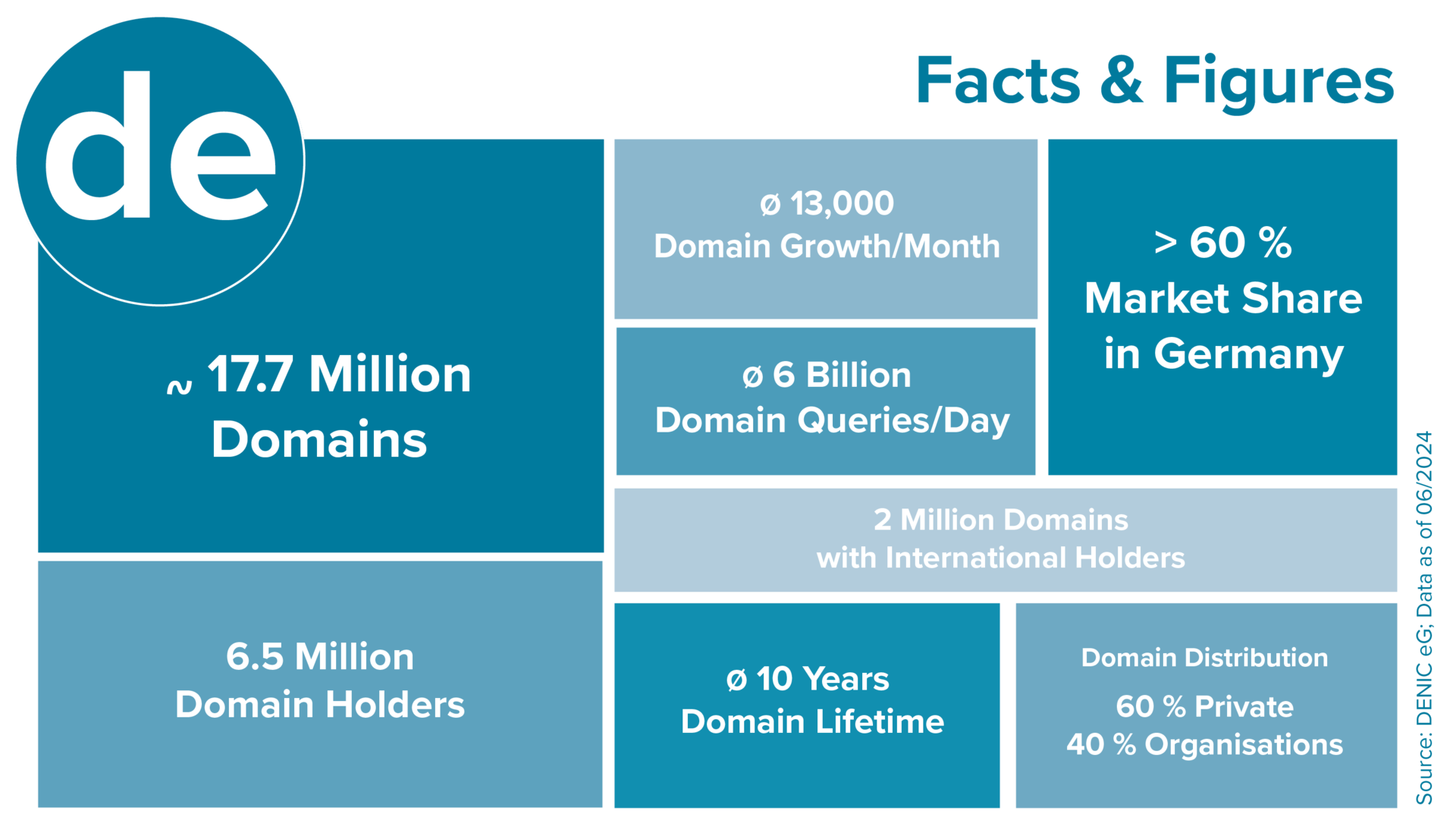Germany’s Internet Country Code .de Is Turning 30 – 16 Million Times of Digital Diversity and Digital Identity
On 5 November 1986 Germany went online as the No. 10 country on the Internet
Every day, countless people in Germany are active in social networks, writing millions of e-mails and posting thousands of tweets. A major share of this communication is effected via domains ending with the German country code .de – not to mention the myriad websites visited in Germany day in, day out. Even with .de registrations lately slowing down: What started on a small scale on 5 November 30 years ago has become an integral part of a global medium that is indispensable for all of us today in our daily routine – and which comes up with fresh innovations every day. The Internet sector thus is one of the growth drivers of the German economy. There is hardly any industry that does not consistently become ever more dependent on the digital infrastructure.
From a Playground for Tinkerers To a Global Playing Field
30 years ago, it had been unimaginable, today it is the norm: text message services, job, car and real estate marketplaces, travel and rating portals, crowdfunding and streaming platforms, online shopping, banking, petitions and campaigns, search engines, virtual forums, encyclopaedias and universities – the Internet is present in all fields of life and has made many things easier, more convenient and more comfortable. Business and economic processes are getting increasingly interlinked with the digital world, Industry 4.0 and the Internet of Things with billions of networked objects are gaining ground fast.
Communicating, using media, searching for information or performing online transactions and much more: About 84 percent of the German-speaking population, from digital natives to silver surfers, are online today. 65 percent of these use the Internet daily, on average for more than two hours, 57 percent also on mobile devices – and the trend is rising. 87 percent of German enterprises with a staff of more than ten have their own website. And roughly 20 percent of the non-food turnover in the German retail sector is generated online by now.

Domains – Signposts on the Internet and Digital Identity
Behind many of these offers is a .de domain. Acting as signposts on the Internet, domains are an integral part of each e-mail address and help to make websites and other online services easily accessible to humans without the necessity to keep in mind endless sequences of numbers, as computers use them to communicate with each other.
Different from a profile in the social networks, with a personal domain users are free to design their web presence according to their own ideas. And in addition to that, they will maintain full sovereignty of their personal data. The domain serves as the hub of a customised individualised web presence; it is the core of one's personal online presentation and integrates complementary web offers, such as social media profiles.
The average digital identity, which enterprises or private persons create with a .de domain, is 14 characters long. Operation of all the technical services related to a German domain rests with DENIC eG, who has been providing it for 20 years. DENIC is a not-for profit cooperative based in Frankfurt am Main, Germany. Today, it has a membership of more than 320 companies from the ICT sector and promotes the preservation of the open, free and secure Internet on the international stage.

Number 3 in the World – Facts and Figures about .de
Featuring a current inventory of more than 16.1 million domains, .de is number two in the world after China (19.5 million) among all the country codes used on the Internet. Referred to all the endings that exist (Top Level Domains), .de is one of the top three, following .com (127.3 million) and .cn.
Due to DENIC’s liberal terms and conditions that allow everybody to register a domain, .de domains already at an early stage were used not only by business and industry but also developed into a favourite option among private users who wanted to build their own "homepage". As a result, growth of .de was very dynamic: In only three years, between 1996 and 1999, domain numbers surged from 20,000 to one million, and subsequent further sharp rises brought registration numbers up to 5 million by 2001 and to 10 million by 2006. While in the boom years, mean increase rates easily exceeded 100 percent, growth has consolidated in the meantime in the now mature market. However, still scoring rates of about one percent, .de continues to gain roughly 150,000 domains every year.
Statistically, every fifth inhabitant of the Federal Republic of Germany has a .de domain today. About one third of these are registered for private individuals, roughly two thirds for enterprises, and a remaining three percent for institutions and organisations, such as authorities, associations, clubs and other initiatives. In total, the number of domain holders amounts to some 7.8 million. All these use one or several domains as their digital visiting card – for their own website, but also for personalised e-mail addresses.
Its high technical stability and resilience have made the German Internet extension a highly regarded brand that is known throughout the world. The confidence of the German Internet community manifests itself not only by .de's large share of more than 65 percent in the domestic market, thus leaving other extensions like .com (20 percent) far behind in Germany. Another clear evidence is the domain holders’ loyalty, resulting in a roughly ten years’ average life of a .de domain.
Key Figures at a Glance

Studies conducted by the Internet industry and independent initiatives, such as the Anti-Phishing Working Group, also regularly give good ratings to the German Top Level Domain: The proportion of domains which is not used at all or used for criminal purposes, such as spam or phishing, is rather low under .de, by international standards. This does not only result in a great relevance for search engines, it also underpins the high standards met by the German TLD when it comes to security on the Internet.
High security and wide reach combined with consistently low prices also render .de domains attractive for domain holders from outside Germany: Roughly 7 percent or 1.1 million domains under .de are registered from abroad. Holders come from 217 different countries, most of them from the USA or the Netherlands.
The popularity of German web offers is reflected by the traffic rates DENIC's infrastructure has to manage on a 24/7/365 basis. More than 40,000 times per second, users call a web service using a .de domain; this is more than seven billion calls per day. Added to this are 300 users per second who want to know if a specific domain is free, which means that 26 million users consult DENIC's whois information service every day.
Media for Download
Milestones of .de Evolution:
Penetration Rate of .de in Germany:
Key Figures at a Glance